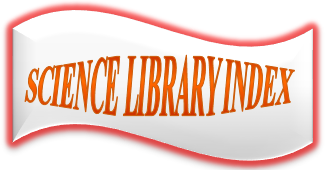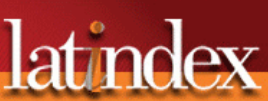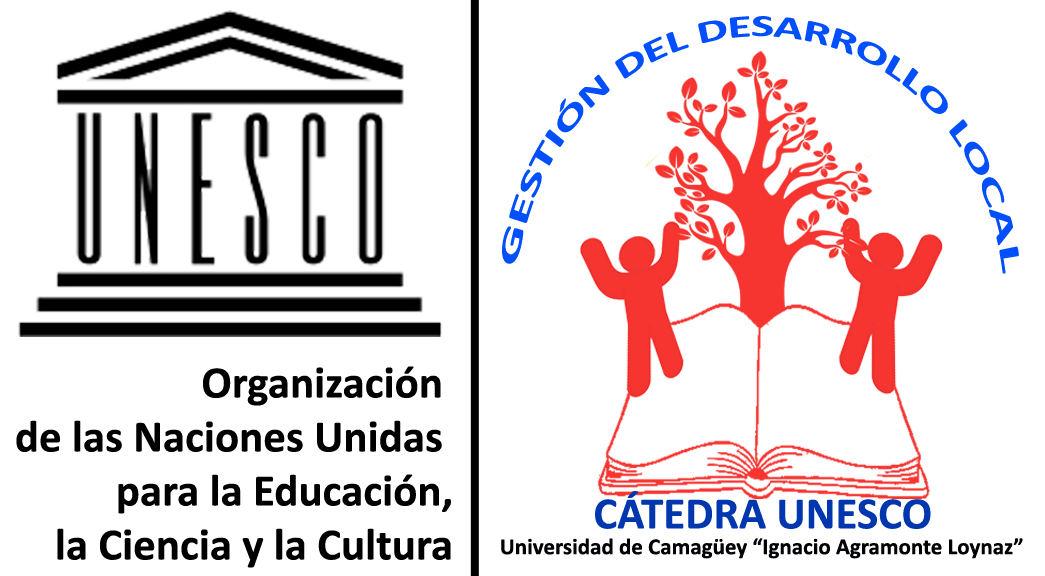Strategic implications of the cognitive image of the Hotel Club Amigo Atlántico Guardalavaca for commercial management
Keywords:
cognitive tourist image, exploratory factor analysis, marketing managementAbstract
Objective: To measure the cognitive image of the Hotel Club Amigo Atlántico Guardalavaca in terms of its use for commercial management.
Materials and methods: A closed-response questionnaire with a 5-point Likert scale was designed to measure the cognitive image perceived by the clients of the Hotel Club Amigo Atlántico Guardalavaca, it was inserted into the online platform QuestionPro and the link was shared on Facebook social network. The results of the questionnaire were processed by the Statistical Package for Social Sciences, which allowed an exploratory factor analysis. The statistical results were interpreted in terms of their use for business management.
Results: The cognitive image perceived by hotel customers is grouped into three factors: cultural experience and sustainability, service experience and quality of life, and natural experience and entertainment. These findings provide valuable information for the commercial management of the hotel, by allowing the identification of key areas that influence customer´s perception.
Conclusions: The study demonstrated the importance of cognitive image in hotel commercial management, being directly related to the customer's perception of the quality of their experience. Exploratory factor analysis was confirmed as an effective tool for identifying the factors that make up cognitive image of the hotel. Hotel commercial management should focus on strengthening the identified dimensions to improve its positioning and increase customer´s satisfaction.
Downloads
References
Albarrán, J. D., & de la Calle, M. (2021). El patrimonio en la imagen turística inducida de Andalucía. Cuadernos de Turismo, (48), 457–490. https://doi.org/10.6018/turismo.493031
Baloglu, S., & McCleary, K. W. (1999). A Model of Destination Image Formation. Annals of Tourism Research, 26(4), 868-897. https://doi.org/10.1016/S0160-7383(99)00030-4
Batista, E., Pérez, E.C., Moreno, M. R., & Coronado, K. Z. (2021). Influencia de la imagen de destinos turísticos en el comportamiento del consumidor. Revista Universidad y Sociedad, 13(6), 75-82. http://scielo.sld.cu/scielo.php?script=sci_arttext&pid=S2218-36202021000600075
Batista, E., Serrano, B., & Vega, L. O. (2021). Imagen cognitiva de destinos turísticos. Una aproximación desde el destino turístico Holguín, Cuba. Tendencias, 22(2), 288–308. https://doi.org/10.22267/rtend.212202.177
Echtner, C. M., & Ritchie, J. R. B. (1993). The Measurement of Destination Image: An Empirical Assessment. Journal of Travel Research, 31(4), 3-13. https://doi.org/10.1177/004728759303100402
Gallarza, M. G., Saura, I. G., & García, H. C. (2002). Destination Image. Annals of Tourism Research, 29(1), 56-78. https://doi.org/10.1016/S0160-7383(01)00031-7
Gartner, W. C., & Ruzzier, M. K. (2011). Tourism Destination Brand Equity Dimensions: Renewal versus Repeat Market. Journal of Travel Research, 50(5), 471-481. https://doi.org/10.1177/0047287510379157
Guan, L.-P., Ayob, N., Puah, C.-H., Affendy Arip, M., & Jong, M.-C. (2023). Destination Image Perception Mediated by Experience Quality: The Case of Qingzhou as an Emerging Destination in China. Electronics, 12(4), 945. https://doi.org/10.3390/electronics12040945
Guerreiro, M., Fortuna, C., Pinto, P., & Mendes, J. (2020). The Dynamic Nature of the City Image: Do Image Components Evolve Over Time? Tourism and Hospitality International Journal, 68(1), 83-99. https://doi.org/10.37741/T.68.1.7
Gil, S. M., & Santana, J. D. M. (2013). The Influence of Motivations on the Image of Non-hotel Tourist Accommodation Offering. International Journal of Tourism Policy, 5(1/2), 59-81 https://doi.org/10.1504/ijtp.2013.054055
Hair, J. F., Babin, B. J., Black, W. C., & E., A. R. (2019). Multivariate Data Analysis. https://www.drnishikantjha.com/papersCollection/Multivariate%20Data%20Analysis.pdf
Harahap, M. A. K., Hasyim, S., Hamdani Harahap, R., Marpaung, B. O. Y., & Saputra, J. (2019). The Effect of Open Tourism Space on Regional Development Through Supply Chain Management in Panatapan Danau Toba Area Simalungun, Indonesia. International Journal of Supply Chain Management, 8(5), 994-1007. https://www.scopus.com/inward/record.uri?eid=2-s2.0-85078046868&partnerID=40&md5=531b743150189e138395206a0239081e
Hernández-García, L. M., Delgado-Cruz, A. D., & Palmas-Castrejón, Y. D. P. (2022). Destination Image: Validation of a Measurement Scale. Revista Interamericana de Ambiente y Turismo, 18(1), 2-12 https://doi.org/10.4067/s0718-235x2022000100002
Huete-Alcocer, N., Martinez-Ruiz, M. P., López-Ruiz, V. R., & Izquiedo-Yusta, A. (2019). Archeological Tourist Destination Image Formation: Influence of Information Sources on the Cognitive, Affective and Unique Image. Frontiers in Psychology, 10, 1-14. https://doi.org/10.3389/fpsyg.2019.02382
Iordanova, E. (2015). Unravelling the Complexity of Destination Image Formation: A Conceptual Framework. European Journal of Tourism Research, 11, 35–56. https://doi.org/10.54055/ejtr.v11i.193
Jia, Q. & Jiang, P. (2021, del 3 al 7 de diciembre). Research on Image Perception of Luxury Hotels in Dalian Based on Text Analysis [conferencia]. In Proceedings of The International Conference on Electronic Business. Nanjing, China. https://iceb.johogo.com/proceedings/2021/ICEB_2021_paper_86_wip.pdf
Lam, J. M. S., Ismail, H., & Lee, S. (2020). From desktop to destination: User-generated Content Platforms, Co-created Online Experiences, Destination Image and Satisfaction. Journal of Destination Marketing Management, 18, 10049. https://doi.org/10.1016/j.jdmm.2020.100490
Leković, K., Tomić, S., Marić, D., & Ćurčić, NV. (2020). Cognitive Component of the Image of a Rural Tourism Destination as a Sustainable Development Potential. Sustainability 12(22), 9413. https://doi.org/10.3390/su12229413
Maher, A. A., & Carter, L. L. (2011). The Affective and Cognitive Components of Country Image. International Marketing Review, 28(6). 559-580. https://doi.org/10.1108/02651331111181411
Marine-Roig E. (2014, del 3 al 7 de junio). From the Projected to the Transmitted Image: The 2.0 Construction of Tourist Destination Image and Identity in Catalonia. Proceedigs Book [conferencia]. 7th World Conference for Graduate Research in Tourism. Istanbul, Turkey.
Najjarzadeh, M., Amirzade, N., & Zarch, M. R. A. (2022). Tourism Bokers' Perspective on Turkey's Image: Marketing Comunications and Subjective Norms as Mediators. Enlightening Tourism, 12(1), 33-69. https://doi.org/10.33776/et.v12i1.5402
Park, D., Lee, G., Kim, W. G., & Kim, T. T. (2019). Social Network Analysis as a Valuable Tool for Understanding Tourists’ Multi-Attraction Travel Behavioral Intention to Revisit and Recommend. Sustainability, 11(9), 2497. https://doi.org/10.3390/su11092497
Matos, A. (2015). Tour Guides and Destination Image: Evidence From Portugal. J. Of Tourism and Hospitality Management, 3(7-8). 129-150. https://www.researchgate.net/publication/284517046_Tour_Guides_and_Destination_Image_Evidence_From_Portugal
Roth, E. (2012). Análisis Multivariado en la Investigación Psicológica: Modelado Predictivo y Causal con SPSS y AMOS. http://repositorio.ucb.edu.bo/xmlui/handle/20.500.12771/134
Sadiq, S. A., & Buba, E. E. (2021). Assessing the Organic Image of Potential Tourists towards North-Eastern Nigeria as a Tourism Destination. The International Journal of Business & Management, 9(1), 320-332. https://doi.org/10.24940/theijbm/2021/v9/i1/BM2101-067
Sánchez, V. V., Félix, B. H., & Velarde, J. R. (2020). La imagen turística de Mazatlán, México: según la percepción de los turistas nacionales. Dimensiones Turísticas, 4(6), 91-118. https://doi.org/10.47557/SSHR8137
Sekhniashvili, G., & Bujdosó, Z. (2023). Developing a Wine Tourism Destination Image Measurement Scale. Sustainability, 15(11), 8549. https://doi.org/10.3390/su15118549
Silva, M. A. da, Costa, R., & Moreira, A. C. (2018). The Influence of Travel Agents and Tour Operators’ Perspectives on a Tourism Destination. The case of Portuguese intermediaries on Brazil’s image. Journal of Hospitality and Tourism Management, 34, 93-104. https://doi.org/10.1016/j.jhtm.2018.01.002
Sudigdo, A., & Khalifa, G. S. A. (2020). The Impact of Islamic Destination Attributes on Saudi Arabians' Decision to Visit Jakarta: Tourism Destination Image as a Mediating Variable. International Journal of Religious Tourism and Pilgrimage, 8(3), 15-30. https://doi.org/10.21427/4raj-ky56
Tasci, A. D. A., & Gartner, W. C. (2007). Destination Image and Its Functional Relationships. Journal of Travel Research, 45(4), 413-425. https://doi.org/10.1177/0047287507299569
Wen, T., & Xu, X. (2024). Research on Image Perception of Tourist Destinations Based on the BERT-BiLSTM-CNN-Attention Model. Sustainability, 16(8), 3464. https://doi.org/10.3390/su16083464
Wu, G., & Liang, L. (2020). Examining the Effect of Potential Tourists’ Wine Product Involvement on Wine Tourism Destination Image and Travel Intention. Current Issues in Tourism, 1–16. https://doi.org/10.1080/13683500.2020.1828310
Yang, J., Yuan, B., & Hu, P. (2009). Tourism Destination Image and Visit Intention: Examining the Role of Familiarity. Journal of China Tourism Research, 5(2), 174–187. https://doi.org/10.1080/19388160902910557
Zahari, M. S., Dusi, D., & Hanafiah, M. (2016). Do Crises Impede the International Tourists Travel Motivation. Tourismos, 11(2), 22-49. https://www.scopus.com/inward/record.uri?eid=2-s2.0-85026451656&partnerID=40&md5=1271cac4eb5d3b060097ac28d3cf566c
Downloads
Published
Issue
Section
Categories
License
Copyright (c) 2024 Management Challenges

This work is licensed under a Creative Commons Attribution-NonCommercial 4.0 International License.








